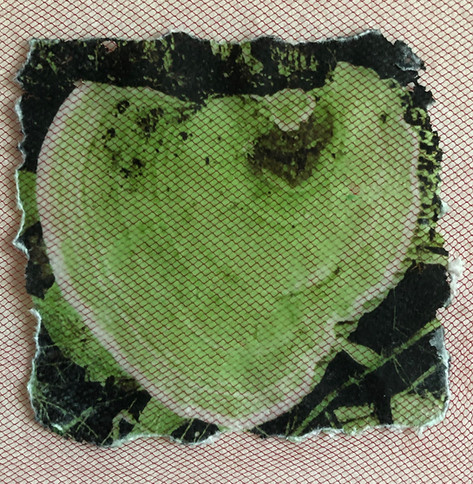Paper Lamination? What is that?
- Janet Scruggs
- Jul 9, 2019
- 2 min read
Updated: Mar 18, 2023
Maybe you've heard the term "Paper Lamination" before. Many haven't. It simply refers to incorporating paper with some type of textile. Having said that, there are a multitude of techniques to do this. The common ingredient in these methods is glue of some sort. Throughout the years, the terms applied to combining paper and fabrics/textiles have varied often along the lines of the "glue" being used. Paper fabric, or fabric paper, uses a 50/50 white glue and water mixture. Wheat paste collage uses cooked wheat starch and water as the glue (and design medium). Silk paper, although intended more for fibres, can include paper products and to produce it any "bendable" glue, from Mod Podge to matte medium, will suffice. Photo transfer is another one which, by one method, uses gel medium to transfer the photo to fabric. In attaching the top layer of napkin portions to fabric with gel medium, I used another form of lamination, which would probably be classified under fabric collage or a form of decoupage (although decoupage usually attaches papers to a hard surface such as glass or wood). Another lamination process I have used is using fusible web to laminate paper to felt or fabric.
All of these methods attach paper to a textile - laminating it so it will not come apart.
While each of these can be categorized as a form of paper lamination, they do have specific unique methods and purposes. In making the choice of which method to use, the objective (the finished look) is key.
One form of paper lamination which I am currently exploring uses matte medium, undiluted, as a bond for paper to an organza, voile, tulle or cheesecloth. A wonderful book by Claire Benn, Jane Dunnewold and Leslie Morgan, "Paper & Metal Leaf Lamination" introduced me to this technique using sheers. It is a fabulous jumping off point for experimentation with silkscreens as the method for applying the medium or glue.
By applying the matte medium with a silkscreen there is an opportunity to control where that medium is applied. I can use screens that block areas from receiving the medium. Where there is no medium, there is no lamination. This means that specific patterns of lamination can be achieved - whether random looking or more prescribed. Fractured patterns and images are the result. Another feature of this technique is the ability to use either side of the piece as the "right" side. Second layers of lamination are possible as well, but these are details for next time!
Below are some examples of the various laminating techniques. My next post will give more detail about using silkscreens for laminating.
From left to right above: Tissue paper laminated to felt; paper/fabric; napkins laminated to fabric; wheat paste collage; silk paper vase and image laminated to tulle.













